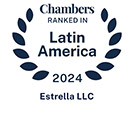Preview of Caribbean Business Article: “Don’t mess with the Mouse: Protecting your Intellectual Property”
“Don’t mess with the Mouse: Protecting your Intellectual Property”
By Sebastián Torres, Esq.
He is one of the world’s most famous characters. Market researchers estimate a 97% recognition rate in the United States that surpasses even Santa Claus. Brand experts estimate its value to exceed $3 billion. I am talking about the ultimate symbol of Intellectual Property (IP): Mickey Mouse.
Mickey’s story, however, did not start with a mouse. Actually, Disney Brothers Studio was a part of Universal Pictures when, Walt Disney created a character named Oswald the “Lucky Rabbit” in 1927. Oswald was an instant hit and Disney thought he was riding first seat on the train to success. As luck would have it, soon after Universal Studios notified him that it had hired away all his employees and retained the rights to Oswald. This loss of IP could have meant the end of his company, yet Disney and one of his most loyal animators, Ub Iwerks, returned to work until they managed to turn the rabbit into a mouse, and Mickey was born.
As the saying goes “smart people learn from their mistakes”, and it seems that Disney Studios learned a lot from theirs since they are quite renowned for enforcing and protecting their IP rights ever since, and so should you.
Most people are not even aware that they own intellectual property. Nevertheless, protecting your IP is crucial to the success of your business. But what is your IP and how should you protect it?
The term IP refers to the mind’s work product that is considered an intangible asset. It is a general term for the various legal protections that an author or creator has from the use or implementation of his work by others without his consent. The purpose of IP laws is to encourage new technologies, artistic expressions and inventions while promoting economic growth; it is a constitutionally protected right.
IP is divided into three areas of protection: Copyrights, Trademarks and Patents. Copyrights protect an original artistic or literary work. Trademarks typically protect brand names and logos used on goods and services. Patents protect inventions.
For example, if you create a new product, you would apply for a patent to protect its design and workings. When you name the product, you should register that brand name as your trademark to protect it from use by others. And, you might register a copyright for the TV commercial that you use to market the product.
These rights have their particular and complex legal requirements, under both state and federal law. You should consult with an IP law firm that can assist you in taking the necessary steps to protect your intangible assets. Our lawyers represent clients in their most challenging and complex intellectual property transactions and litigations.






